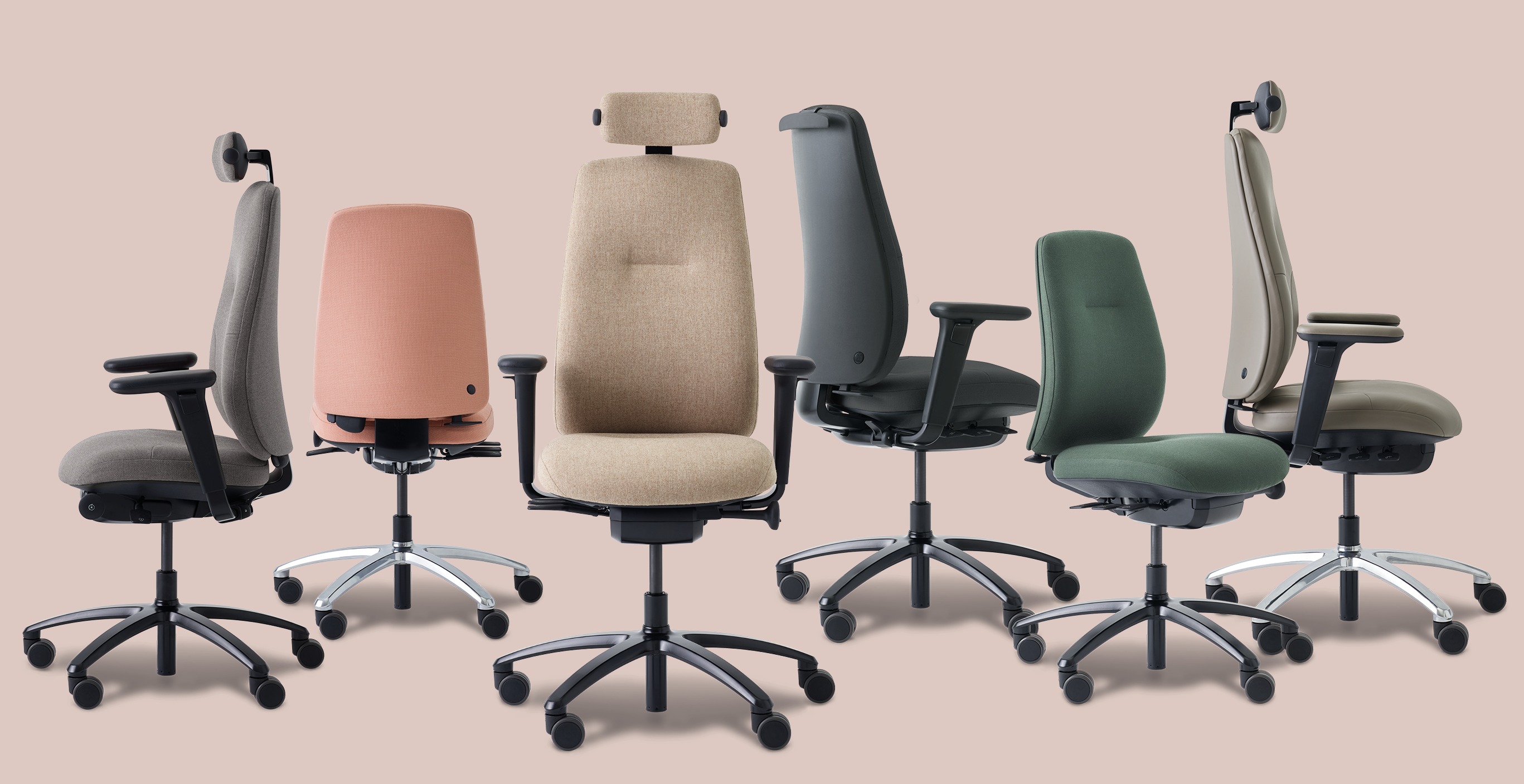Ergonomics is defined as "the scientific study of people and their working conditions, in order to improve effectiveness.” Putting that into practice, is all about creating workplace environments that are adapted to the person or people, and not the other way around.
It is more than just preventing backaches though. There are three distinct fields of ergonomics where research and design come into play:
Physical ergonomics
What most people think of when you hear the word ergonomics. When applied to the workplace its aim is to reduce musculoskeletal injuries and disorders.
Cognitive Ergonomics
In understanding how the brain works – in regards to emotions, reasoning and perception – workplace design can work in tandem and not against natural responses, whilst improving overall wellbeing and happiness.
Organisational Ergonomics
Improving the form and operations of complex systems, such as business structure, to reduce ambiguity and improve safety culture within a workplace.
The physical aspects are what most people think of when you hear the term ergonomics, but it is important to appreciate the whole picture, which is why perhaps today we often hear the term "human factors and ergonomics" which presents a more rounded approach.
Office furniture & ergonomics
Workplace ergonomics is all too often underappreciated, especially by younger generations with more forgiving bodies. In fact, many employees are unaware of the thought that has gone into ensuring a healthy workplace environment for them. However, the global remote work experiment of 2020 gave rise to a new appreciation of optimal workplace design, especially when it comes to furniture. A quick look at Google Trends shows that “Ergonomic Chair” became one of the most globally searched terms of 2020, and is still significantly higher than pre-pandemic levels.
“For me, ergonomics means designing a workplace for the individual, in such a way that the person can work there without discomfort in the long term,” says Jens Ewers, a workplace ergonomics specialist. Based in Germany, Jens has over 30 years of experience in the office furniture industry, helping businesses make smart workplace furniture choices not just based on how they look, or how much they cost, but on their ability to ensure healthy and productive employees.
Jens: “The goal is to minimize physical and mental stress while taking into account environmental factors. fine-tuning chairs, table heights, and input devices to the user's body dimensions and activities. If this is achieved optimally, it is a blessing for the individual's health and a real reduction in total costs for the employer.”
Chairs & ergonomics
“Good sitting leads to efficient and productive work.” Says Jens, “A chair must be able to provide people with so much well-being that their facial features relax permanently. Rigid seating techniques that promote a rigid sitting position generally lead to tension. One-sided strains lead to back problems in the long run.
“The basis for choosing a chair is and remains health; then, if possible, comes an elegant design and comfort to feel good, even on long working days. This order is non-negotiable. Chairs that have this potential anyway usually have a pleasant feel and are made of high-quality materials that are processed with the highest quality standards.”
A chair that offers a wide range of adjustments – height, tilt, seat depth, lumbar support, neck support, armrest height, and angle – is crucial when it comes to physical ergonomics. A chair that caters for cognitive ergonomics should also be intuitive. Adjustments that are easy to do, and designed in a way that the user simply knows how to operate, are a major factor in achieving this. And when it comes to organisational ergonomics – ensuring that every employee receives the same amount of personalised attention, with every workspace catered for, and every employee trained on how to use their new furniture.
The RH Logic (Video below) is a perfect example of a chair with a wide range of adjustment mechanisms allowing for optimal user performance and comfort.
Flokk’s approach to human factors
Human factors & ergonomics is a cornerstone principle in the way that Flokk designs furniture. We look closely at human needs, particularly within the context of day-to-day activities that take place. Our goal is to make furniture that provides a positive experience for every user. We also understand that people are different, and not every workplace or workspace requires the same seating solution. That’s why we have a range of designs that follow different philosophies suited to different needs.
The RH Logic chair
However, Jen’s favourite Flokk design is the RH Logic. “RH is a Swedish manufacturer that has been intensively involved in ergonomics for many years. With RH Logic, the chair is individually adjusted to the respective user. The seat concept intuitively motivates users to assume a natural, upright posture when working at the desk. In relaxation phases, the comfortable backrest invites you to relax.”
An ergonomist's favourite for several decades, the RH Logic underwent a complete redesign in 2019, a five-year project to redefine a classic. Retaining its trademark comfort and adjustability, the project aimed to add a new level of intuitiveness. “To make it accessible has been the driving force,” say’s Jonas Stokke, one of the designers on the project. By working with architects, office workers, and ergonomists, the redesign ensured that every need was met.

![RH_Mereo_models_2[ppt]](https://focus.flokk.com/hubfs/RH_Mereo_models_2%5Bppt%5D.jpg)

/Ergonomics-and-human-factors-HFE-the-science-of-interactions-Source.png)
/ergonomics.jpg)


